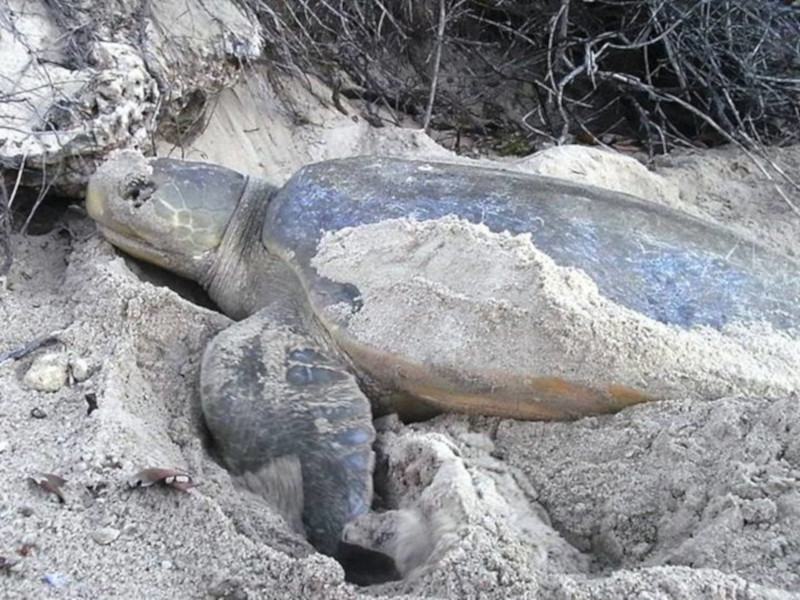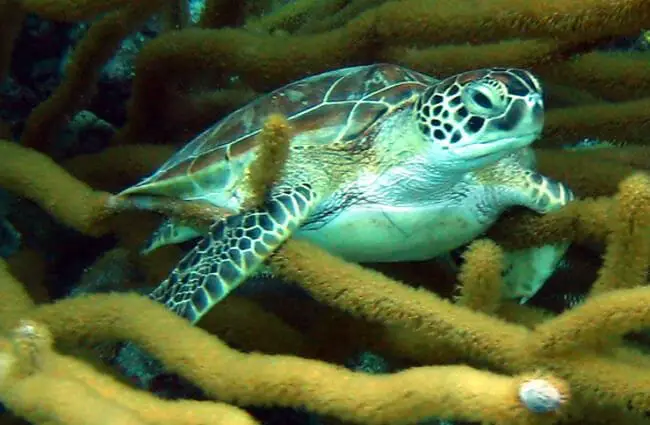

The paired CCL data (measured at nesting and back-calculated) did not significantly differ (p = 0.875). Lastly, four of the samples analyzed were collected from deceased adult females that had previous sizes known from on-going mark/recapture studies at nesting sites in Western Australia. A bootstrapped von Bertalanffy growth model was also applied and showed consistencies with the spline curve, yielding an estimated upper size limit, Linf, at 89.2 ± 0.04 cm (95% CI: 85.5 to 95.9 cm) with the intrinsic growth rate parameter, k, at 0.185 ± 0.0004 (0.16 to 0.22) at the same mean SSM (84.9 cm CCL) the estimated ASM was 16.3 ± 0.05 years (95% CI: 12.8 to 27.7 years). Growth was modeled as a smoothing spline fit to the size-at-age relationship and at the mean SSM (84.9 cm CCL) corresponded with a spline-predicted maturity age of 18 years (95% CI: 16 to 24), while mean nesting sizes reported in the literature (86.4 to 94 cm CCL) corresponded to estimated ages of 24+ years. Estimates for ASM ranged from 12.0 to 23.0 years (mean: 16.3 ± 0.53 SE), SSM ranged from 76.1 to 94.0 cm CCL (mean: 84.9 ± 0.90 SE), and maximum observed reproductive longevity was 31 years for a 45-year old male flatback. We identified the onset of sexual maturity for 29 turtles, based on rapprochement growth patterns in the bones. We analyzed humeri from 74 flatback sea turtles ranging in body size from 6.0–96.0 cm curved carapace length (CCL), and recovered from Western Australia (n = 48), Eastern Australia (n = 13), central Australia (n = 8 Northern Territory n = 3, the Gulf of Carpentaria n = 5), and unknown locations (n = 5).

Using a rare collection of bone samples gathered from across northern Australia, we applied skeletochronology and characterized the length-at-age relationship, established baseline growth rates from the hatchling to adult life stages, and produced empirical estimates of age-at- and size-at-sexual-maturation (ASM, SSM). We continue to advocate against allowing any new oil and gas exploration and development along the Atlantic and Pacific Coasts.To address a major knowledge gap for flatback sea turtles (Natator depressus), a species endemic to Australia and considered ‘Data Deficient’ for IUCN Red List assessment, we present the first-ever skeletochronology-derived age and growth rate estimates for this species.
#Flatback seaturtle description series
We created a series of educational materials against the illegal trade of sea turtle products, including a sea turtle identification guide widely used by scientists and government authorities. Internationally we successfully stopped proposals to renew commerce with hawksbills in CITES and promoted sea turtle conservation resolutions in the InterAmerican Convention for the Protection and Conservation of Sea Turtles. In Mexico, we helped change wildlife and fisheries regulations to forbid capture and trade of sea turtle products, as well as promoted the use of safe fishing gear to decrease sea turtle bycatch in shark fisheries, protection measures and correct management of nesting sites. In California, Defenders is currently advocating for a law that phases out the use of harmful drift gillnets while promoting sustainable, local fisheries. Defenders also promotes the vigilant use of turtle excluder devises (TEDs) and innovative fishing practices to reduce sea turtle deaths in trawling nets.

We strive to reform harmful fisheries that kill thousands of sea turtles every year and have successfully advocated for new rules on Cape Hatteras National Seashore to limit off-road vehicles on the beach to protect nesting sites. The flatback sea turtle is named after its flat carapace, or shell, which is unlike the more curved shell of other sea turtle species. In the Southeast and along the Gulf of Mexico, we work to preserve nesting beaches and foraging areas, improve coastal-construction policies so that jetties and sea walls do not prevent turtles from nesting, promote responsible lighting along nesting beaches, encourage local residents, visitors and businesses to remove trash that attracts raccoons and other predators that devour eggs and hatchlings, and organize workshops and beach clean-ups.


 0 kommentar(er)
0 kommentar(er)
